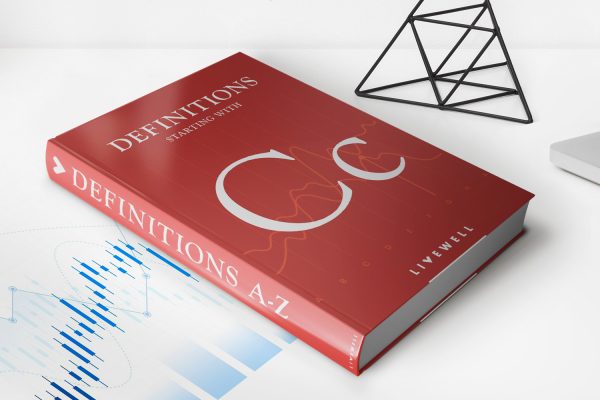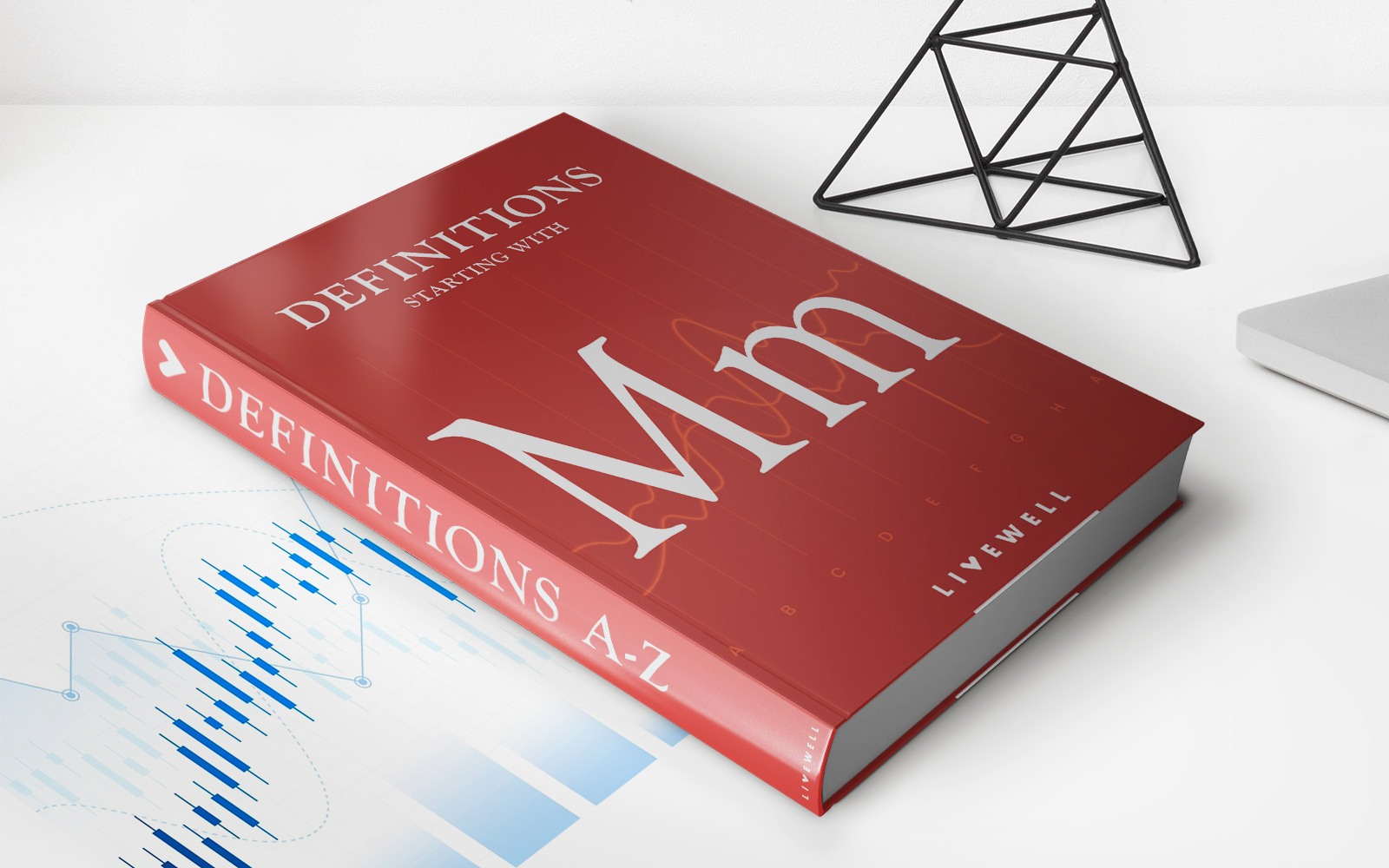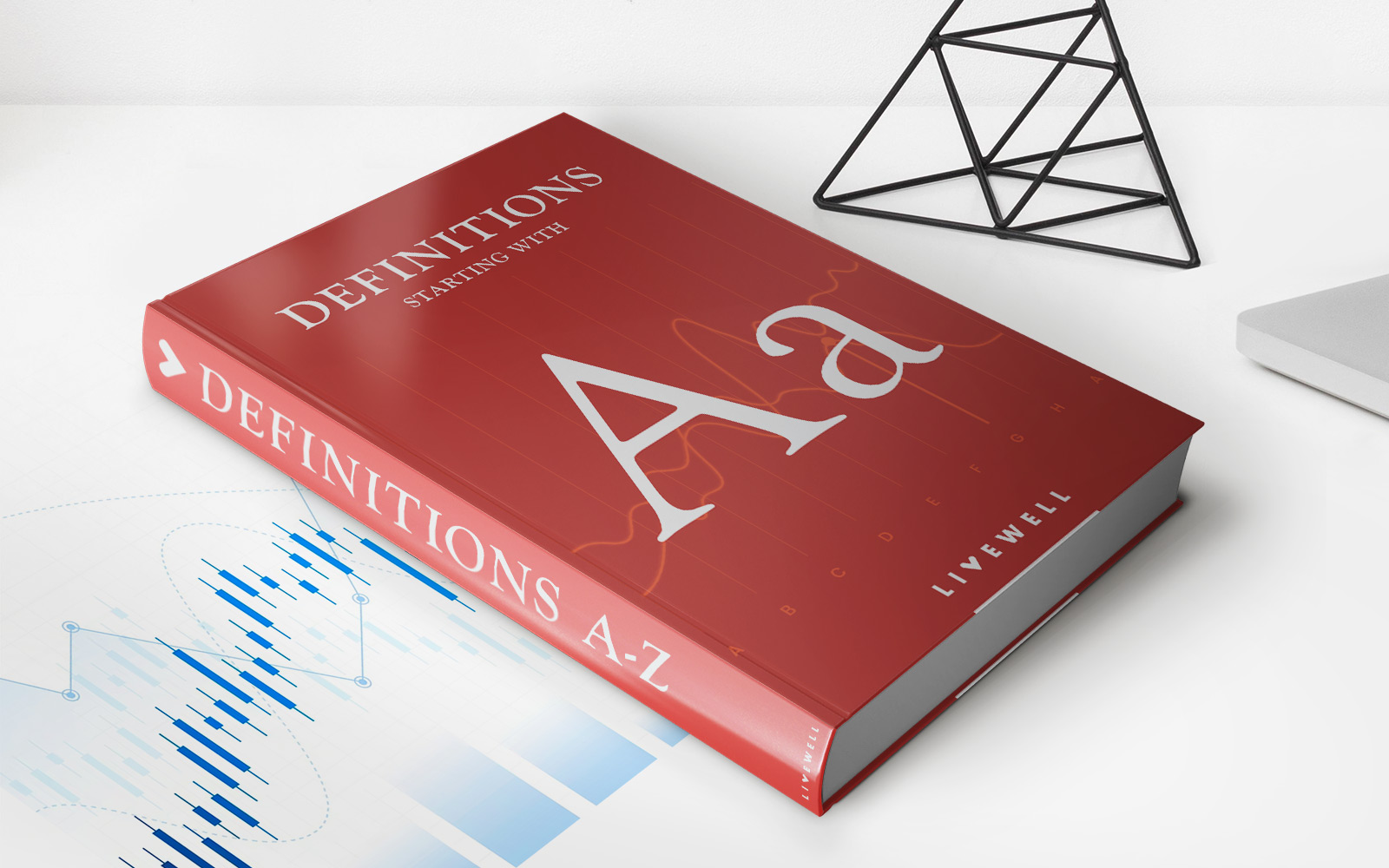

Finance
What Is A Carve-Out In Insurance?
Published: November 20, 2023
Discover what a carve-out in insurance means and how it relates to finance. Explore the financial implications and benefits of this insurance concept.
(Many of the links in this article redirect to a specific reviewed product. Your purchase of these products through affiliate links helps to generate commission for LiveWell, at no extra cost. Learn more)
Table of Contents
Introduction
Welcome to our comprehensive guide on carve-outs in insurance. Carve-outs are an important concept in the world of insurance that can have significant implications for both individuals and businesses. Understanding what a carve-out is and how it works can help you make more informed decisions when it comes to your insurance coverage.
A carve-out, in the context of insurance, refers to the separation or exclusion of specific coverage or benefits from a broader insurance policy. This means that certain risks or types of claims are intentionally not included in the policy, requiring a separate insurance arrangement to provide coverage for those specific risks.
Carve-outs can be found in various types of insurance policies, including health insurance, property insurance, liability insurance, and more. The purpose of creating carve-outs is to allow for more tailored and specific coverage, addressing unique risks that may not be adequately covered by a standard insurance policy.
In this article, we will delve deeper into the concept of carve-outs in insurance, exploring how they work, the different types of carve-outs, the benefits they offer, potential concerns to be aware of, and provide real-life examples to illustrate their application.
Whether you are an individual looking to understand how carve-outs can impact your personal insurance coverage or a business owner seeking to optimize your insurance policies, this guide aims to equip you with the knowledge needed to navigate the complexities of carve-outs in insurance effectively.
Definition of Carve-Out in Insurance
In the insurance industry, a carve-out refers to the exclusion or separation of specific coverage or benefits from a broader insurance policy. It involves intentionally leaving out certain risks or types of claims from the main policy, which then require a separate insurance arrangement to provide coverage for those specific risks.
Carve-outs are typically implemented when standard insurance policies do not adequately cover certain unique risks or when there is a need for more specialized coverage. By carving out specific risks, insurance companies can offer more tailored and targeted coverage options to meet the specific needs of individuals or businesses.
Carve-outs can be found in different types of insurance, including:
- Health insurance: Carve-outs are commonly used to exclude certain medical conditions, treatments, or services from a general health insurance policy.
- Property insurance: Carve-outs may be used to exclude certain perils or specific types of property from a standard property insurance policy. For example, a policy may exclude coverage for flood damage or specific high-value items.
- Liability insurance: Carve-outs can be used to exclude certain types of claims or risks from a liability insurance policy. For instance, a product liability policy may carve out coverage for claims related to a specific type of product.
- Employee benefits insurance: Carve-outs can be employed to exclude certain benefits, such as dental or vision coverage, from a comprehensive employee benefits insurance plan.
It’s important to note that carve-outs are typically accompanied by separate insurance arrangements to address the excluded risks. This means that individuals or businesses may need to obtain additional policies or endorsements to fully cover the carve-out risks.
Overall, carve-outs in insurance allow for more customization and flexibility, enabling insurance providers to offer tailored coverage solutions while ensuring that policyholders have the specific protections they require.
How Carve-Outs Work
Carve-outs in insurance involve the intentional exclusion of certain coverage or benefits from a broader insurance policy. When a carve-out is implemented, the main insurance policy will not provide coverage for the risks or claims specifically carved out.
Here’s how carve-outs typically work:
- Identifying specific risks: Insurance providers assess the unique risks or types of claims that may not be adequately covered by a standard insurance policy. These risks could be specific to certain industries, locations, or other factors. For example, a property insurance policy for a coastal area may carve out coverage for hurricane-related damages.
- Defining the carve-out: Once the risks are identified, the insurance policy is modified to specifically exclude coverage for those risks. This can be done through endorsements, exclusions, or other policy language.
- Separate insurance arrangements: In order to address the carve-out risks, policyholders may need to obtain additional insurance coverage or endorsements. These separate insurance arrangements provide coverage for the specific risks that are excluded from the main policy. For instance, a business may need an additional flood insurance policy to cover the carve-out risk for flood damage.
- Managing multiple policies: When carve-outs are in place, policyholders need to effectively manage multiple insurance policies to ensure comprehensive coverage. This includes understanding the specific coverage and limits provided by each policy and coordinating claims if a loss occurs.
Carve-outs offer the advantage of allowing policyholders to obtain more tailored coverage that specifically addresses their unique risks. By separating certain risks from the main policy, carve-outs can provide more targeted protection while potentially reducing premium costs by eliminating coverage for risks that may not be applicable.
However, it’s important for policyholders to carefully review and understand the terms and conditions of both the main policy and any additional policies or endorsements required to cover the carve-out risks. Consulting with an insurance professional can help ensure that all risks are adequately addressed and that there are no gaps in coverage.
Types of Carve-Outs
Carve-outs in insurance can take various forms depending on the specific risks or benefits being excluded. Here are some common types of carve-outs:
- Specific peril carve-outs: This type of carve-out involves excluding coverage for specific perils or events. For example, a property insurance policy may carve out coverage for floods, earthquakes, or hurricanes, requiring the policyholder to obtain separate insurance for those specific risks.
- Limitation or cap carve-outs: In some cases, a carve-out may consist of placing a limitation or maximum cap on coverage for certain risks. For instance, a liability insurance policy may have a carve-out that limits coverage for claims related to a particular high-risk activity.
- Service or treatment carve-outs: Carve-outs in health insurance commonly involve excluding coverage for specific medical services or treatments. This could include procedures deemed experimental or cosmetic in nature, or certain elective surgeries.
- Product carve-outs: In product liability insurance, carve-outs can be used to exclude coverage for claims related to specific products or product lines. This allows the insurer to provide coverage for the general product liability risks while mitigating exposure to higher-risk products.
- Endorsement carve-outs: Carve-outs can also be implemented through policy endorsements. These endorsements modify the terms of the main insurance policy to exclude coverage for specific risks or claims.
- Industry-specific carve-outs: Some carve-outs are tailored to specific industries or professions. For example, professional liability insurance policies for lawyers may have carve-outs for certain types of legal services or areas of practice.
It’s important for policyholders to carefully review their insurance policies to identify any carve-outs that may be in place. Understanding the specific carve-outs and their implications can help individuals and businesses determine if additional coverage is needed and make more informed decisions regarding their insurance needs.
Remember that different insurance policies and providers may have varying carve-out options available. Consulting with an insurance professional who specializes in your particular line of coverage can provide valuable insights and ensure that all potential carve-outs are addressed appropriately.
Benefits of Carve-Outs in Insurance
Carve-outs in insurance offer several benefits for both individuals and businesses. These benefits include:
- Customized coverage: Carve-outs allow policyholders to tailor their insurance coverage to fit their specific needs. By excluding certain risks or claims, individuals and businesses can focus their coverage on the areas that are most relevant to them, ensuring that they have the necessary protection in place.
- Cost savings: Carve-outs can help reduce insurance costs by eliminating the need to pay for coverage that may not be applicable. By excluding certain risks that have a lower likelihood of occurrence or less impact on the policyholder, insurance premiums can be lowered, resulting in cost savings over time.
- Risk management: Carve-outs allow policyholders to address unique and specialized risks that may not be adequately covered by a standard insurance policy. By obtaining separate coverage for these specific risks, individuals and businesses can better manage and mitigate their exposure to potential losses.
- Flexibility and adaptability: Carve-outs provide flexibility in insurance coverage, allowing policyholders to adjust their policies as their needs change. As new risks arise or business activities evolve, carve-outs enable the addition of specific coverage to address these changes, without having to modify the entire insurance policy.
- Targeted risk transfer: By carving out specific risks, policyholders can transfer those risks to a specialized insurer or obtain separate policies specifically designed for those risks. This ensures that the coverage is tailored to the unique characteristics and requirements of the carved-out risks.
- Enhanced claims management: Carve-outs can streamline claims management processes. Since specific risks are carved out and covered separately, it becomes easier to track and manage claims related to those risks, ensuring that they are handled efficiently and promptly.
Overall, carve-outs in insurance provide a way to optimize coverage by tailoring it to individual needs, reducing costs, and enhancing risk management strategies. However, it’s important to carefully assess the potential advantages and consider any trade-offs or limitations associated with carve-outs to ensure that they align with specific insurance goals and requirements.
Potential Concerns with Carve-Outs
While carve-outs in insurance offer various benefits, it’s important to be aware of potential concerns that can arise. These concerns include:
- Coverage gaps: One of the main concerns with carve-outs is the potential for coverage gaps. If the separate insurance arrangement for the carved-out risks is not properly obtained or if there are discrepancies in the coverage provided, there is a risk that certain losses or claims may not be adequately covered.
- Complexity: Managing multiple insurance policies and navigating the intricacies associated with carve-outs can be complex. Policyholders must ensure that they thoroughly understand the terms and conditions of each policy and effectively coordinate claims when multiple policies are involved.
- Increased costs: While carve-outs can lead to cost savings by eliminating coverage for less relevant risks, there is a possibility that the separate insurance arrangements for specific risks can result in additional premium costs. It’s important to consider the overall cost implications when implementing carve-outs.
- Policy restrictions: Carve-outs may come with certain restrictions or limitations. These restrictions can impact the scope of coverage and may potentially limit the policyholder’s ability to claim for certain types of losses or damages. It’s crucial to thoroughly review the terms and conditions of both the main policy and any carve-out policies or endorsements to understand any restrictions in coverage.
- Policyholder confusion: Carve-outs and the complexity associated with managing multiple policies can potentially lead to confusion for policyholders. It’s important to have a clear understanding of the coverage provided by each policy and seek assistance from insurance professionals if needed.
- Underwriting considerations: Carve-outs may require additional underwriting considerations, especially when specific risks are being excluded from a main policy. Insurance providers may require more detailed information or assessments to evaluate the risks and determine appropriate pricing or terms for the carve-out coverage.
These concerns highlight the importance of carefully reviewing insurance policies and seeking guidance from insurance professionals. It’s crucial to understand the potential limitations, costs, and complexities associated with carve-outs to ensure that they align with your insurance needs and provide the necessary protection for your specific risks.
Examples of Carve-Outs in Insurance
Carve-outs in insurance can be found across various types of policies and industries. Here are a few examples to illustrate how carve-outs are implemented:
- Health Insurance: In health insurance, carve-outs are common when it comes to certain medical treatments or services. For example, a health insurance policy may exclude coverage for cosmetic procedures, fertility treatments, or experimental therapies. Policyholders may need to obtain separate insurance or pay out-of-pocket for these specific services.
- Property Insurance: Carve-outs can be seen in property insurance policies, particularly in areas prone to natural disasters. For instance, in a coastal region prone to hurricanes, a property insurance policy may carve out coverage for windstorm damage, requiring the policyholder to obtain a separate windstorm insurance policy to cover that specific risk.
- Liability Insurance: Carve-outs are prevalent in liability insurance policies to exclude certain types of claims. For example, a general liability insurance policy may have a carve-out for professional liability claims, such as those arising from errors or omissions in the provision of professional services. The policyholder may need to obtain a separate professional liability policy to cover those specific risks.
- Employee Benefits Insurance: In employee benefits insurance, carve-outs can be observed when specific benefits are excluded from a comprehensive plan. For instance, dental or vision coverage may be carved out from a comprehensive health insurance plan, requiring the employer or employees to obtain separate insurance coverage for those particular benefits.
- Product Liability Insurance: Carve-outs are also seen in product liability insurance. In this case, the policy may carve out coverage for claims arising from the use of a specific product or product line. This allows the insurer to provide coverage for general product liability risks while excluding higher-risk products from the policy.
These examples highlight how carve-outs can be used to tailor insurance coverage to specific needs and risks. They demonstrate the importance of understanding the terms and conditions of insurance policies, identifying potential carve-outs, and obtaining appropriate coverage to address those risks.
It’s essential for individuals and businesses to work closely with insurance professionals who can provide guidance and help evaluate the specific risks that should be addressed through carve-outs and separate insurance arrangements.
Conclusion
Carve-outs in insurance play a crucial role in tailoring coverage to meet the unique needs and risks faced by individuals and businesses. By intentionally excluding specific risks or benefits from a broader insurance policy, carve-outs allow for more customized and targeted coverage arrangements.
Throughout this guide, we have explored the definition and workings of carve-outs in insurance. We have discussed the different types of carve-outs, ranging from specific peril exclusions to limitations and industry-specific carve-outs. Additionally, we have highlighted the benefits that carve-outs offer, such as customized coverage, cost savings, and enhanced risk management.
However, it’s important to be aware of potential concerns associated with carve-outs, including coverage gaps, complexity, and potential limitations in coverage. Understanding these concerns can help individuals and businesses effectively navigate the complexities of managing multiple policies and ensure that their insurance needs are met.
Real-life examples of carve-outs in health insurance, property insurance, liability insurance, employee benefits insurance, and product liability insurance have demonstrated the practical application of carve-outs in different insurance contexts.
In conclusion, carve-outs in insurance provide a valuable tool for individuals and businesses to obtain more tailored coverage, manage risks effectively, and optimize their insurance needs. By understanding the concept of carve-outs and working closely with insurance professionals, policyholders can make informed decisions and have the confidence that their insurance policies align with their specific requirements.
Remember, if you have any questions or doubts regarding carve-outs or insurance coverage in general, it’s always advisable to consult with an experienced insurance professional who can provide personalized advice based on your unique circumstances.














